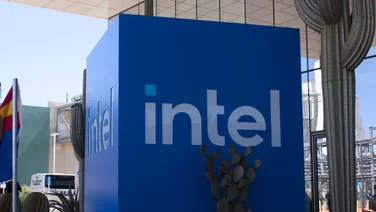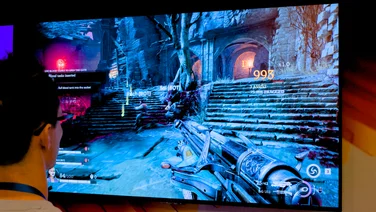To help us provide you with free impartial advice, we may earn a commission if you buy through links on our site. Learn more














- Stylish and very well made
- Funky RGB-backlit keyboard
- Point of entry into the Razer lifestyle
- 256GB SSD too small for the price
- The competition offers better battery life
- Fan's a bit noisy
Razer is justly renowned for the build quality and design of its gaming laptops so the Razer Book 13 represents somewhat of a departure.
It’s the firm’s first laptop targeted overtly at productivity instead of gaming, a 13.4in ultraportable that has the likes of Apple’s MacBook Pro 13 and Dell’s XPS 13 firmly in its sights.
READ NEXT: Our pick of the best laptops for students
Razer Book 13 review: What you need to know
Just to repeat for those of you not paying attention, this is not a gaming machine, despite the badge on the lid. That said, Intel’s latest integrated Iris Xe GPUs are not the gutless wonders they were a few years ago so a bit of gaming is not out of the question.














And this being a Razer, you are entering a whole world of matching, and rather desirable, gaming paraphernalia. Once you have bought your Razer laptop you can add a Razer-branded monitor, keyboard, headset, mouse, backpack, gaming chair, face mask, eGPU, t-shirt and boxer shorts.
OK, I made that last one up, but you get the idea. That eGPU is the most interesting and essential. For £260 plus the cost of a PCIe graphics card, it can turn your ultrabook into a gaming monster. All those peripherals will work just as well with any good laptop (you need a Thunderbolt 3 or 4 port for the eGPU) but having one with Razer’s gaming cred will be an attraction to many potential buyers.
Razer Book 13 – Price & Competition.
The Razer Book range starts at £1,200 for the 11th generation i5-1135G7 model with a non-touch Full HD display and ends at £2,000 for a Core i7-1165G7 machine with a 4K touchscreen. In the middle sits the £1,580 Core i7-1165G7 Full HD touchscreen version. That’s the machine Razer sent me for review.
Dell’s XPS 13 laptop is generally regarded as the benchmark for ultra-compact Windows notebooks and it is not hard to see why. With its super-slim screen bezels, strong battery life and excellent keyboard and now with 11th gen Intel silicon the XPS 13 is a very fine machine. It is a bit limited in terms of physical connections, though: a pair of Type-C ports is all you get.
If you’re not wedded to Windows then naturally you are going to consider the new Apple M1-powered MacBook Pro. A design classic with phenomenal battery life and great performance it is hard to seriously criticise, although the same caveat applies regarding the two Type-C ports as it does with the Dell.
Additional competition comes from the likes of Microsoft’s Surface Laptop 3, Samsung’s Galaxy Book Ion and the Huawei MateBook X Pro but as we pointed out in our recent review of the XPS 13 none of these laptop have moved to 11th generation Intel silicon yet. Why buy a new premium laptop with yesterday’s processor?
And then there is the elephant in the room: Lenovo’s Yoga Slim 7. At £850 it’s massively cheaper and, thanks to its Ryzen 7 underpinnings, seriously powerful. It offers great battery life too. We called it the Golf GTI of laptops and in the same way that VW’s iconic hot hatch can be a better ownership proposition than a far more expensive thoroughbred sports car, the Yoga Slim 7 may be a better purchase for many than a premium productivity machine like the Razer Book 13.
Razer Book 13 review: Design & Build Quality
Considering this is Razer’s first attempt at a productivity machine, the design is nothing short of a triumph. Encased in CNC-machined anodized aluminium it looks and feels every bit as desirable as a MacBook Pro or a Dell XPS 13
The design is more subtle than you might expect from a gaming house, Razer going for a reserved and somewhat angular look akin to HP’s new Envy 14 and Apple’s MacBook Pro 13. At 296 x 199 x 15mm and 1.4kg it is bang on the money for size and weight.
User upgrade options are limited as they always are with notebooks of this stamp. Whip the back off and the only things you can swap are the 256GB NVMe Samsung M.2 SSD and the battery. For the price, Razer should give you a 512GB SSD or at least the option to upgrade at the point of purchase. The SSD is pretty quick though, registering read and write speeds of 2,835MB/sec and 1,518MB/sec respectively.














Razer has to be congratulated for keeping the display bezels so slim – 4mm at the sides and bottom, 6mm at the top – but still finding room for a Windows Hello-enabled webcam at the top. Despite the slender proportions Razer has managed to squeeze in two USB-C Thunderbolt 4 ports – one on each side – as well as a USB-A 3.1 USB, an HDMI 2.0 port and a MicroSD card slot. The usual Intel AX 201 Wi-Fi 6 card handles wireless data and Bluetooth 5.1 connectivity.
The keyboard nods to the gamer community via Razer’s signature per-key Chroma RGB system that lets you set the backlight colour for individual keys or change the colour scheme for the whole keyboard.
Aesthetics aside, the mechanical basics of the keyboard are spot-on. It is rock-solid with a very precise action. It gives little away to the XPS13’s keyboard, which is often regarded as the best-in-class. The glass touchpad is also pretty good: it’s spacious and smooth with a clean and positive click-action.
READ NEXT: Our pick of the best laptops for students
Razer Book 13 review: Display & Audio
The 16:10, 1,920 x 1,200 IPS display is covered with a sheet of Gorilla Glass 6 and has a gloss finish. Technically it’s very good, though uniquely for a Razer laptop it is limited to a 60Hz refresh rate. How are we defining ‘good’? The maximum brightness of 555cd/m2, sRGB coverage of 97.3%, Delta E colour accuracy of 1.08 and a contrast ratio of 1730:1. That all makes for a display that is very, very easy on the eye. The touchscreen part of the equation is just as good with swipes and taps all registering perfectly.
The THX-certified stereo speakers that fire upwards at each edge of the keyboard don’t let the side down. Perhaps a little more bass would have been nice but there is volume aplenty and the sound is nicely refined and detailed.
Razer Book 13 review: Performance & Battery Life
With a quad-core Intel Core i7-1165G7 processor, 16GB of dual-channel RAM and Intel’s Evo certification, the performance of the Razer Book 13 is not surprisingly broadly similar to other machines we have recently tested using the same basic underpinnings.
The marginal advantage the Razer Book 13 enjoys is down to aggressive thermal management which lets the processor run in boost mode for longer than would otherwise be the case. The fan speed can also be controlled manually using Razer’s Synapse application, another spillover from Razer’s gaming background.














Put the machine into Performance mode and the fan speed can then be set to run permanently between a minimum of 2,700rpm and a maximum of 5,500rpm depending on requirements. The fans are a little on the loud side when giving it the full beans but this is still a useful feature if you are running long, demanding tasks. Or gaming.
This being a laptop with Razer’s three-headed snake on the lid, let us start our look at performance with some gaming benchmarks. It is clear from the outset that the Razer Book can’t hold a candle to machines with a dedicated GPU but it didn’t disgrace itself.
Starting with less demanding titles, running the DiRT Showdown test at 720p we saw an average 60fps while the Metro: Last Light Redux test at 1080p returned 54fps, not far short of the best the 60Hz screen can relay.
Turning to the far more demanding Hitman 2 it was another story. Even with the super-sampling turned down the Razer Book only managed 30fps. Dialling the resolution down to 1280 x 720 and knocking back all the detail levels to the lowest possible settings upped that to a still lowly 45fps. Doom ran at between 50fps and 60f/s when set to 1,280 x 720.

Our bespoke 4K media test returned a score of 124, four points better than the Dell XPS 13. That is a near irrelevant difference. Apple’s M1 silicon can do much better though, easily scoring into the 220s and machines running AMD’s Ryzen 4000-series, such as the Lenovo Yoga Slim 7, also perform far better.
Intel really needs to up its game on this front. If you are looking at a laptop for 4K video editing and the like, the extra cores offered by Apple and AMD are well worth seeking out.

In the GeekBench 5 test, the Razer Book again demonstrated a very slight edge over the XPS13 but as with the 4K test, the difference would be nigh-on impossible to discern in everyday use.

The 55Wh (4762mAh) battery managed to keep the lights on for 10hrs 48mins in our standard battery run-down test which, if not quite in MacBook Pro (14 hours 40 minutes) or Yoga Slim 7 (15 hours 40 minutes) territory, is still pretty good by Core i7 lightweight laptop standards. For a more direct comparison, the Dell XPS 13 managed 11hrs 57mins in the same test.
READ NEXT: Our pick of the best Chromebooks














Razer Book 13 review: Verdict
Forget that it is the first effort, the Razer Book 13 is a very, very good ultraportable and an outstanding first attempt at a productivity machine by Razer.
The looks and performance are second to none and Razer has wisely resisted the urge to limit the number of ports in the way Dell and Apple have. I am guessing that is Razer’s gaming heritage showing through. Two Type-C USB on their own would be an annoyance if you wanted to use your laptop as the hub of a gaming rig.
To turn the Razer Book into a gaming machine you’ll need to splash a good few quid in the Razer store, though – on an eGPU external graphics processor housing, monitor and other accessories. At the end of the day, however, you will have a gaming setup to be proud of and a very fine laptop for all other occasions.























